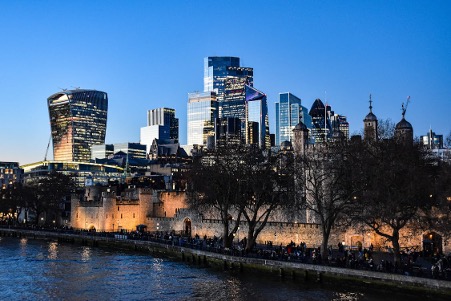
As we approach 2025, London’s property development landscape is poised for change, driven by post-recession recovery, environmental considerations, and shifts in urban planning. Here’s an in-depth look at what property developers might expect, including opportunities, regulatory shifts, tax incentives, and the impact of financial policies like bank base rate changes.
Opportunities in 2025
- Urban Renewal and Mixed-Use Developments:
- Regeneration Projects: With initiatives like the ongoing regeneration of areas like Silvertown or Wembley Park, developers have ample opportunities to participate in transforming underused spaces into vibrant mixed-use developments.
- Conversion of Office Spaces: The shift towards remote work has left an abundance of office spaces ripe for conversion into residential or mixed-use properties, offering a unique niche for developers.
- Sustainable Development:
- Green Building Certifications: There’s increasing demand for properties with high environmental credentials like BREEAM or LEED certifications, influencing both residential and commercial builds.
- Retrofitting for Efficiency: Older buildings are becoming targets for energy efficiency upgrades, providing opportunities in the refurbishment market.
- Affordable Housing:
- Government Incentives: London’s housing crisis continues to push for more affordable housing units, with potential incentives for developers who include a certain percentage of affordable homes in their projects.
- Tech Integration:
- Smart Homes: Developments incorporating smart technology for energy management, security, and connectivity are becoming more appealing to tech-savvy buyers and tenants.
Changes in Planning Regulations
- Relaxed Height Restrictions:
- High-Rise Opportunities: Some boroughs are relaxing height restrictions, especially for developments that offer public amenities or sustainable features, opening up new possibilities for skyscraper projects.
- Simplified Planning for Small Sites:
- SME Support: There’s a trend towards making planning easier for small to medium-sized developments, which could benefit developers focusing on niche or local projects.
- Community Engagement:
- Public Consultation: Planning applications might increasingly require community involvement, pushing developers to design with local input to ensure smoother approvals.
Tax Breaks and Incentives
- Energy Efficiency Tax Credits:
- Eco-Friendly Incentives: Developers might benefit from tax relief for projects that significantly improve energy efficiency or incorporate renewable energy sources.
- Affordable Housing Incentives:
- Tax Discounts: There could be tax benefits or direct funding for projects that include a substantial portion of affordable housing.
- Business Rates Relief:
- For New Developments: New commercial developments might see temporary business rates relief to encourage investment in less developed areas.
Impact of Bank Base Rate Drops
- Cheaper Borrowing:
- Lower Interest Rates: If base rates drop, loans become cheaper, potentially allowing developers to finance larger projects with lower interest costs.
- Stimulated Market:
- Increased Property Demand: Lower rates could encourage more people to buy or rent, boosting the demand for both new and existing properties.
- Investment Risks:
- Market Overheating: Developers should be cautious; low rates might inflate property prices, leading to potential market corrections if rates rise unexpectedly.
Additional Considerations for Developers
- Regulatory Compliance:
- New Building Regulations: With a focus on sustainability, developers must keep up with evolving standards for construction materials, waste management, and energy use.
- Public-Private Partnerships:
- Collaborative Projects: Opportunities for working with local governments on infrastructure or housing projects that serve public interests could increase.
- Workforce and Skills:
- Need for Specialized Skills: The push for sustainability and technology integration means developers might need to invest in training or partner with specialists.
- Community Well-being:
- Inclusive Design: Developments that include community spaces or wellness facilities might see faster approval and higher tenant satisfaction.
Final thoughts
By 2025, London will likely see a landscape where sustainable, community-focused, and technologically integrated developments are at the forefront. Developers who can navigate this new environment, leveraging tax incentives and adapting to lower interest rate environments, stand to benefit significantly. However, the key will be balancing development pace with quality, ensuring projects not only meet current demands but are poised for future sustainability and community integration.
Fox Davidson supports London property developers through securing and advising developers on the best property development finance across the UK market. We work with developers to secure senior debt, mezzanine finance and equity.
To discuss property development finance with a London mortgage broker, do get in touch.



